
Pacecco De Rosa (byname of Giovanni Francesco De Rosa; 17 December 1607 - 1656) was an Italian painter, active in Naples.

Pacecco De Rosa (byname of Giovanni Francesco De Rosa; 17 December 1607 - 1656) was an Italian painter, active in Naples.
He was a contemporary of Massimo Stanzione or, according to others, a pupil of him. De Rosa was influenced by his father-in-law, Filippo Vitale, also a painter: this is shown in his earlier works, such as a Deposition now in the Museum of the Certosa di San Martino. Also in the Certosa is a St. Nicholas of Bari and Basilius (1636), showing influences of both Stanzione and Domenichino, who was in Naples from 1631.
Attributed to De Rosa is a series portraying the Madonna with Child (one in Museum of the Certosa di San Martino; one in the church of Santa Marta, Naples; and one in the National Gallery of Prague). Of the 1640s is a painting, in collaboration with Vitale, of the Madonna with St. Charles Borromeo in the church of San Domenico Maggiore. His other works include an Annunciation in San Gregorio Armeno, St. Thomas of Aquino in Santa Maria della Sanità and the later Massacre of the Innocents in the Museum of Philadelphia and Diana Bathing in the Capodimonte Museum.
Among the artists thought to be in his circle are Girolamo De Magistro. [1]
He died in Naples in 1656 from the Plague.

Luca Giordano was an Italian late-Baroque painter and printmaker in etching. Fluent and decorative, he worked successfully in Naples, Rome, Florence, and Venice, before spending a decade in Spain.

Guido Reni was an Italian painter of the Baroque period, although his works showed a classical manner, similar to Simon Vouet, Nicolas Poussin, and Philippe de Champaigne. He painted primarily religious works, but also mythological and allegorical subjects. Active in Rome, Naples, and his native Bologna, he became the dominant figure in the Bolognese School that emerged under the influence of the Carracci.

The Caravaggisti were stylistic followers of the late 16th-century Italian Baroque painter Caravaggio. His influence on the new Baroque style that eventually emerged from Mannerism was profound. Caravaggio never established a workshop as most other painters did, and thus had no school to spread his techniques. Nor did he ever set out his underlying philosophical approach to art, the psychological realism which can only be deduced from his surviving work. But it can be seen directly or indirectly in the work of Rubens, Jusepe de Ribera, Bernini, and Rembrandt. Famous while he lived, Caravaggio himself was forgotten almost immediately after his death. Many of his paintings were re-ascribed to his followers, such as The Taking of Christ, which was attributed to the Dutch painter Gerrit van Honthorst until 1990.

Belisario Corenzio was a Greek-Italian painter, active in Venice and Naples. He is one of few Greek painters that did not belong to the Cretan Renaissance like his contemporaries of the time. He escaped the maniera greca completely. He adopted the Venetian style. Other similar Greek painters were Marco Basaiti, Ioannis Permeniates, Antonio Vassilacchi and El Greco. He was sometimes referred to as Il Greco. His teacher was prominent Venetian painter Tintoretto. In 1590, at age 32 Corenzio settled in Naples. Corenzio was influenced by Cavalier d'Arpino. He continued to flourish in the region. His apprentices included: Luigi Rodriguez, Andrea di Leone, Onofrio De Lione and Massimo Stanzione. Corenzio painted many frescos that survived today. Some of his works are in the Church of San Severino and Certosa di San Martino. His style resembles Caravaggio. An Italian legend in Naples exists involving Corenzio, Spanish painter Jusepe de Ribera, and Battistello Caracciolo. They were referred to as the Cabal of Naples. The three painters were rumored to have poisoned their competition for painting contracts. The rumors lack documented evidence. The three painters were very popular in Naples. Corenzio frescoed the Crypt that holds the remains of Matthew the Apostle at Salerno Cathedral and it depicts scenes from the Gospel of Matthew. Corenzio was one of the most celebrated fresco painters in Naples during his time. His drawings can be found all over the world namely at the Metropolitan Museum, Museo di Capodimonte and Louvre. More recently, his life and work was studied by the Greek art historian Panayotis K. Ioannou in a comprehensive monograph.

Giuseppe Cesari was an Italian Mannerist painter, also named Il Giuseppino and called Cavaliere d'Arpino, because he was created Cavaliere di Cristo by his patron Pope Clement VIII. He was much patronized in Rome by both Clement and Sixtus V. He was the chief of the studio in which Caravaggio trained upon the younger painter's arrival in Rome.
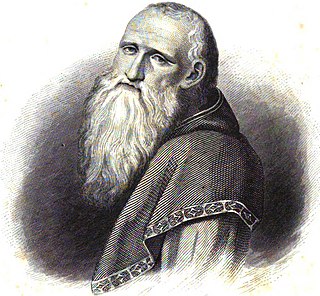
Bernardino Luini was a north Italian painter from Leonardo's circle during the High Renaissance. Both Luini and Giovanni Antonio Boltraffio were said to have worked with Leonardo directly; he was described as having taken "as much from Leonardo as his native roots enabled him to comprehend". Consequently, many of his works were attributed to Leonardo. He was known especially for his graceful female figures with elongated eyes, called Luinesque by Vladimir Nabokov.
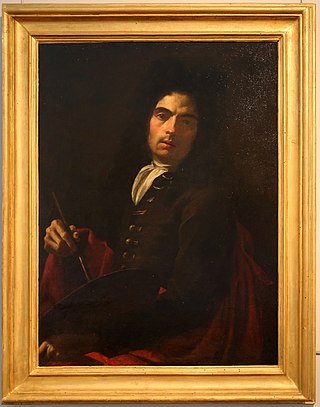
Corrado Giaquinto was an Italian Rococo painter.
Bernardo Castello (1557–1629) was an Italian painter of the late-Mannerist style, active mainly in Genoa and Liguria. He is mainly known as a portrait and historical painter.

Cosimo Fanzago was an Italian architect and sculptor, generally considered the greatest such artist of the Baroque period in Naples, Italy.
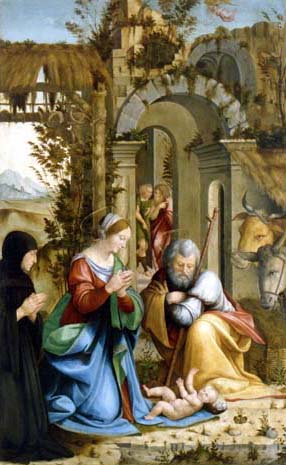
Andrea Sabbatini (1487–1530) was an Italian painter of the Renaissance.

Giovanni Battista Caracciolo (1578–1635) was an Italian artist and important Neapolitan follower of Caravaggio. He was a member of the murderous Cabal of Naples, with Belisario Corenzio and Giambattista Caracciolo, who were rumoured to have poisoned and disappeared their competition for painting contracts.

Lorenzo de Caro was an Italian painter, active in the late Baroque style in his native city of Naples.

Massimo Stanzione was an Italian Baroque painter, mainly active in Naples, where he and his rival Jusepe de Ribera dominated the painting scene for several decades. He was primarily a painter of altarpieces, working in both oils and fresco. His main subject matter was biblical scenes. He also painted portraits and mythological subjects. He had many pupils and followers as his rich color and idealized naturalism had a large influence on other local artists, such as Francesco Solimena. In 1621 Pope Gregory XV gave him the title of Knight of the Golden Spur and Pope Urban VIII made him a knight of St. John around 1624 and a knight of the Order of Christ in 1627. From then on, he liked to sign his works as "EQUES MAXIMUS".

Domenico Gargiulo called Micco Spadaro was an Italian painter of the Baroque period, mainly active in Naples and known for his landscapes, genre scenes, and history paintings.
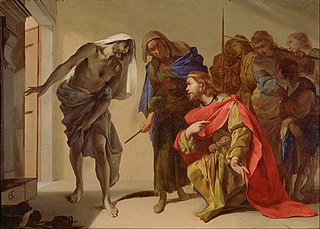
Bernardo Cavallino (1616–1656) was an Italian painter and draughtsman. He is regarded as one of the most original painters active in Naples during the first half of the 17th century.

Paolo Domenico Finoglia, or Finoglio, was an Italian painter of the early-Baroque period, active mainly in South Italy, including Naples and towns in Apulia.
Agostino Beltrano was an Italian painter active in the Baroque period in his native city of Naples. He was a pupil of Massimo Stanzione, the uncle of his wife, and is known to have been active in 1646. He is said to have murdered his 36-year-old wife and painter, Aniella di Beltrano, in a fit of jealousy. He died in Naples.
Pompeo Landulfo was an Italian painter active mainly in Naples. He was born in Maddaloni near Caserta, Italy.

Giovanni Agostino da Lodi was an Italian painter who was active from c. 1495 to c. 1525.
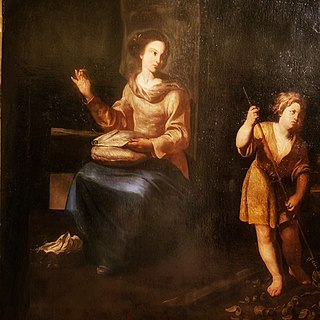
Diana de Rosa, also known as Annella de Rosa or Annella di Massimo, was a seventeenth-century Neapolitan painter.